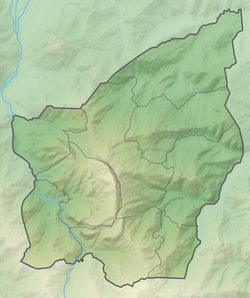
Monte San Cristoforo is a mountain of southern San Marino. [1] It is located between the towns of Fiorentino and Montegiardino, and rises to a height of 534 metres.

Monte San Cristoforo is a mountain of southern San Marino. [1] It is located between the towns of Fiorentino and Montegiardino, and rises to a height of 534 metres.